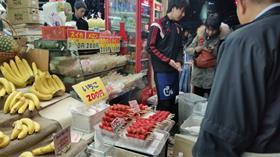
Japan’s fresh fruit imports during July 2017 were up 108 per cent on the same month last year, hitting 155,368 tonnes, according to data from Japan’s Ministry of Finance.
Banana imports grew 111 per cent, from 77,668 tonnes in July 2016 to 115,368 tonnes in July 2017, with the Philippines supplying more than 80 per cent of the country’s imported bananas.
Jack Moriya, president of leading importer Tokyo Seika said that the Philippines had recovered as the leading supplier of bananas, while Ecuador's share of the market fell to 13.4 per cent, down from 23.3 per cent in July 2016.
Moriya said that compared with July 2016, pineapple, apple, tangerine, cherry and papaya imports had all increased significantly, while melon and orange imports heavily decreased, by 53 per cent and 80 per cent, respectively.
Kiwifruit imports remained stable during July 2017 to 11,993 tonnes, slightly down from 12,003 tonnes in July 2016. New Zealand remains the primary supplier, accounting for 94.1 per cent of Japan’s kiwifruit imports during July, with Chile supplying 5.8 per cent.
In the seven months ending 31 July 2017, Japan’s fresh fruit imports rose slightly to 997,764 tonnes, up from 990,943 tonnes during the same time in 2016.
Banana imports remained stable at 579,557 tonnes, while apple imports grew 227 per cent, pineapples were up 115 per cent. Both cherry and mango imports also increased slightly during those seven months compared to the year prior.
Imports of oranges, avocados and melons all decreased.
Moriya said that Southern Hemisphere grape suppliers Chile and Australia continued to compete for a share of the market, in the first seven months of 2017 split 49.9 per cent to Chile, 40.1 per cent to Australia.



